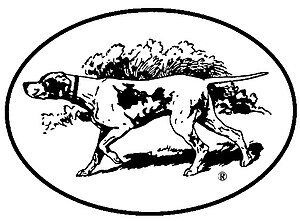After you've successfully hooked up the holter monitor on your Boxer, they've left it on for the full 24 hours, and you've sent the tape/recording in to be analyzed, you get to play the waiting game. Some services are very fast, consistently offering 24-hour turn-around times once they receive your recording. Others takes days or even weeks. If you're not good with waiting, or if you need the results sooner rather than later, you might want to check out customer satisfaction and turn-around times before you rent or purchase your holter.
Puppies for sale or dog training ads which appear on the Boxers 101 blog do not necessarily represent either businesses or actions recommended by Boxers 101. For information about Boxer breeders and training Boxers, please visit the Boxer Crazy forum.
Wednesday, August 31, 2011
Sunday, July 17, 2011
Holter Monitor Hook-Up: The "Fort Knox" Method
Hooking up a Boxer to a holter monitor -- a 24-hour ambulatory EKG -- has three main goals: One, record the dog's heartbeat for 24 hours; two, keep the electrodes attached to the dog's body for the entire 24 hours; and three, keep the dog from eating the wires that run from the electrodes to the monitor. To achieve these goals, proper hook-up of the holter monitor is essential.
Labels:
Boxer,
Care and Maintenance,
Health
Friday, July 15, 2011
Holter Monitoring for Boxer Dogs
Boxer breeders who are concerned about producing long-lived, healthy puppies engage in health testing, which includes, among other things, holter monitoring. A holter monitor is a 24-hour ambulatory EKG, meaning the dog wears the monitor for 24 hours while it goes about its normal daily routine -- usually. (Some dogs dislike the holter and won't do things like walk, potty, play, etc., but most, especially after the first time they wear it, adapt quickly and act normally.) Holtering detects abnormal heartbeats, called VPCs (ventricular premature contractions) associated with Arrhythmogenic Right Ventricular Cardiomyopathy, or ARVC, a leading health issue in Boxers today.
Labels:
Boxer,
Care and Maintenance,
Health
Thursday, May 19, 2011
ABC National 2011
I'm back and finally recovered from the 2011 American Boxer Club National Specialty, held once again in Ft. Mitchell, KY from May 7 - 13. I try to stay on Friday night so I don't have to check out of my hotel during Best of Breed judging, so arrived home early Saturday afternoon. As with past Nationals, I really needed a vacation to recover from my vacation!
With 497 dogs entered in the Specialty, and 179 of those also in the Futurity, there is plenty of Boxer love to go around. As with any dog show, there are more losers than winners -- but the National is the time when placing 4th in the class is still a big deal, and even making the cut is sometimes a major accomplishment. In honor of that, following are the full results for the Futurity and Specialty, and the winners in Obedience and Junior Showmanship.
Sunday, April 17, 2011
Aortic Stenosis in Boxer Dogs: Genetics and Inheritance
 Image via WikipediaThis is the second part of a series of articles on aortic stenosis in Boxers. View part one, Physiology. Further articles will be posted shortly.
Image via WikipediaThis is the second part of a series of articles on aortic stenosis in Boxers. View part one, Physiology. Further articles will be posted shortly.Aortic Stenosis is a common heart condition in Boxers, caused by a ridge or narrowing on the wall of the aorta, at or just below the aortic valve. Aortic Stenosis is considered to be a genetic, inherited disease in dogs, and research on Newfoundlands and Boxers has supported this theory.
Labels:
Care and Maintenance,
Genetics,
Health,
Info
Thursday, February 17, 2011
Boxers at the Westminster Kennel Club Dog Show
 Image via WikipediaThis week saw the 135th annual Westminster Kennel Club dog show, a two-day event filled with pomp, circumstance, and the best dogs in the country. Westminster entries are limited to 2,500 dogs, and the top five dogs in each breed, from January 1 to October 31 of the previous year, receive invitations to the show. A win at Westminster is one of the highest achievements in the United States dog show world, and many dogs retire after the Westminster show.
Image via WikipediaThis week saw the 135th annual Westminster Kennel Club dog show, a two-day event filled with pomp, circumstance, and the best dogs in the country. Westminster entries are limited to 2,500 dogs, and the top five dogs in each breed, from January 1 to October 31 of the previous year, receive invitations to the show. A win at Westminster is one of the highest achievements in the United States dog show world, and many dogs retire after the Westminster show.
Subscribe to:
Posts (Atom)



